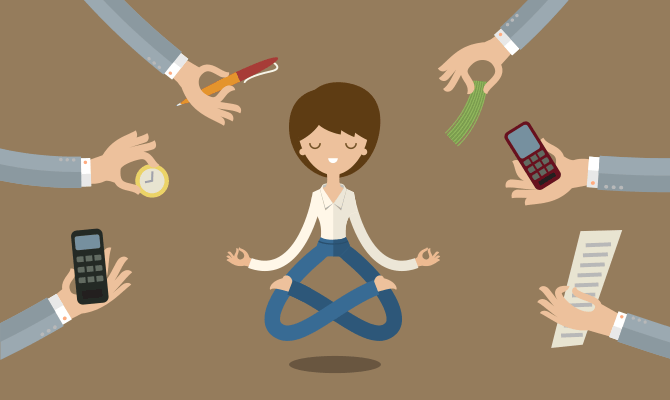Happy Melon would like you to pause from your busy life
![<? $single_post->image['title']; ?> <? $single_post->image['alt']; ?>](https://happymelon.com.au/wp-content/uploads/2021/02/wellness-at-work.png)
Home >> Journal >> Corporate >> 5 Wellness At Work Trends In 2021
5 Wellness At Work Trends In 2021
Wednesday 10th March
For many businesses, wellness at work took a backseat in 2020 as the pandemic wreaked havoc. What we don’t seem to realize is this: almost three-quarters of the Australia’s workforce faced workplace disruption in some form. There were redundancies, pay cuts, layoffs and forced annual leaves. There was widespread personal and financial uncertainty.
It’s no wonder that the mental health of the Australian workforce is gravely affected. The severity of it will undoubtedly begin to reflect as the world tries to return to normalcy. For businesses, this provides an opportunity as great as any. Now’s a great time to shift the focus of wellness at work initiatives to a holistic one. Move beyond the fascination with biomedical statistics and waistlines.
Instead, focus on mental health & stress reduction. Peace of mind & productivity. Financial wellbeing and sustainable practices. As we look forward to be and to feel great in 2021, here are some wellness trends to look forward to. Most industry experts predict that these will dominate the corporate wellness landscape.
#1 – Food will become an intrinsic part of wellness at work

For a long time, businesses have turned a blind eye to the importance of nutrition at the workplace. But healthy eating might just be the most important part of the puzzle. The Australian Institute of Health and Welfare’s (AIHW) states that more than 50% of the population is overweight. Less than 5% adults eat their daily recommended intake of veggies.
Well, what’s the solution, one might wonder. Business have the valid argument that employee eating habits extend to outside the workplace. Also, it might be impractical and unfeasible to enforce culinary rules on the workforce.
A typical workday for most employees is mentally draining. They work on erratic schedules and scurry to meet deadlines. However, they are also creatures of habit. Their routines center on the demands of work. They are also highly influenced by the people around them. This makes the workplace one of the best places to introduce healthy eating.
Businesses can provide healthier food options. Even better, restrict access to unhealthy foods. For instance, remove soda from the vending machine. Swap trans-fat laden fast food with healthier alternatives. Encourage the selection of foods that nourish the body. Partner with companies that can deliver healthier meals maybe.
Birmingham University reveals that employees with unhealthy eating habits are 66% more likely to have poor productivity. Poor productivity can negatively impact the bottom line. Enough said.
#2 – Talk and Walks will become the norm
The mundane Monday morning board room meet might finally meet its end. Instead, walk-and-talk meetings might take over. Also called walking meetings, these meetings abandon the common meeting spots along with the couch and chair.
Instead, participants are encouraged to engage in the meeting while they walk. The walk can be through the office. Depending on the size and the location of the premises, you can even head outdoors.
There are benefits galore to walking, as we all know. One of the lesser-known benefits though is that it boosts creativity. Some added creativity won’t hurt in a meeting filled with corporate jargon. That’s not all. There are anecdotal instances that suggest that walking meetings are less distractive. They also lead to more honest conversations with employees. While this might seem like a fad, walking meetings aren’t new.
Some of the business leaders who recommend the walk and talk, include Barrack Obama and Mark Zuckerberg. Businesses might be reluctant to introduce a change in conventional methods. But that can change when you take a look at the concept from a cost-benefit analysis. Walking meetings are practically free of cost. They are not disruptions from work. They provide a variety of health benefits. Your employees can break away from monotony. In fact, it will be difficult to find a cheaper way to boost creativity and increase engagement.
#3 – Mind over matter for wellness at work

The biggest shift in the wellness at work space will be the recognition of mindfulness as a critical component of a wellness program. Mindfulness has for long been on the fringes of the Australian wellness landscape. But much to our surprise, it’s yet to get its due. The bigwigs in America took notice early, mind you. Google, BOA and Goldman Sachs are some of the companies that started mindfulness training a few years ago.
Mindfulness is a very simple practice. It’s essentially breaking away from one’s surroundings to reflect on the present. For a concept so simple, the benefits it offers are tremendous.
Reduces Anxiety
21% of Australians have taken time off from work due to anxiety. Mindfulness training helps reduce anxiety. It empowers the employee to identify feelings that trigger anxiety. But instead of fighting the thoughts, mindfulness is about acknowledging them. This allows the person to gain an insight into the thoughts. Identifying the underlying cause of anxiety is the best way to tackle it head-on.
Prevents depression
1-million Australians have depression in a year. Mindfulness helps reduce depression and may even help prevent it. Just like it helps identify anxiety triggers, mindfulness allows the employee to identify the chain of negative thoughts. It can be negative thoughts about the workplace. It can even be about the job or completely unrelated to work. Either way, it will affect the employee’s performance and productivity. This chain plays constantly in an endless loop in the mind of a person that’s experiencing depression. Focusing on separating oneself from this pattern, helps break this.
Improves cognition
Did you know that Australian businesses lose $34-billion each year to employee presenteeism? This is a phenomenon in which an employee lacks productivity. They are physically present at work but are unable to perform at their best due to various reasons. Some of these reasons are stress, anxiety and depression. We already spoke about how mindfulness can help reduce anxiety and depression. Mindfulness also helps improve cognition. It rewires the brain’s ability to retain attention and executive functioning.
Happy Melon’s wellness at work programs focuses on mindfulness, meditation and movement. Our corporate wellness programs are flexible and we work with organizations of all sizes.
#4 – Movement will redeem the desktop culture

The average Australian employee sits for 6-hours and 43-minutes every day. There’s a growing body of evidence that suggests that this is an extremely unhealthy trend. It can lead to cardiac problems, circulatory issues and obesity. Not to mention that postural problems can get aggravated too. But 2020 was an eye-opener.
A lot of people moved to healthier lifestyles. Exercise at home became the norm when gyms downed shutters. Employers can continue this trend by encouraging mid-work movement breaks. It does not have to be hard physical activity mind you. Yoga is a minimalistic physical activity that can be practiced anywhere. It is associated with an ever-growing list of physical and mental health benefits.
It helps boost mood and increases resilience to workplace stressors. A mid-work break for a yoga stretch can be a godsend to the spine. Stretching helps boost circulation and prevents muscle hardening. It can also help combat postural problems. Our yoga sessions are non-disruptive and available on demand. We can train your employees in the office or virtually.
#5 – Wellness at work will center on stress reduction
Workplace stress affects 73% of Australian employees. 85% of employees believe that the onus is on employers to addresses workplace stress. The question is, are you doing enough to address it? A number of reasons can cause stress at the workplace. Erratic work schedules, repeated deadlines, pressure and lack of acknowledgement are some of the primary ones.

Stress can cause a cascade of problems, both physical and mental. It can reduce productivity, trigger anxiety, cause depression and even attrition. 42% of employees in the US have left a job because of workplace stressors. Businesses must ensure that they create a work culture that is conducive to growth. Acknowledge employee contribution. Encourage contributions with recognition. Create multiple channels of communication for employees to share grievances. Consider an open work culture where sharing ideas is valued.
Instead of overburdening employees with deadlines, motivate them to prioritize health and wellness. Fixing cultural problems can weed out the most common causes of stress. The rest can be addressed with the right wellness at work program.
Holistic wellness with Happy Melon
Happy Melon aims to inform, engage and transform your workforce. We do not chase instant results. Hence our programs are easy to adapt to. They follow a progressive approach to wellness. Our goal is to produce happy and productive employees. That reflects in our processes, which usually translate into tangible results for our partners.
We have multiple programs that can be further customized based on your organization’s goals. In-office or virtually, we can distress your workforce, promote movement and help them deal better with negative thoughts.
Speak to us now to know how we can help you with your wellness at work programs.
